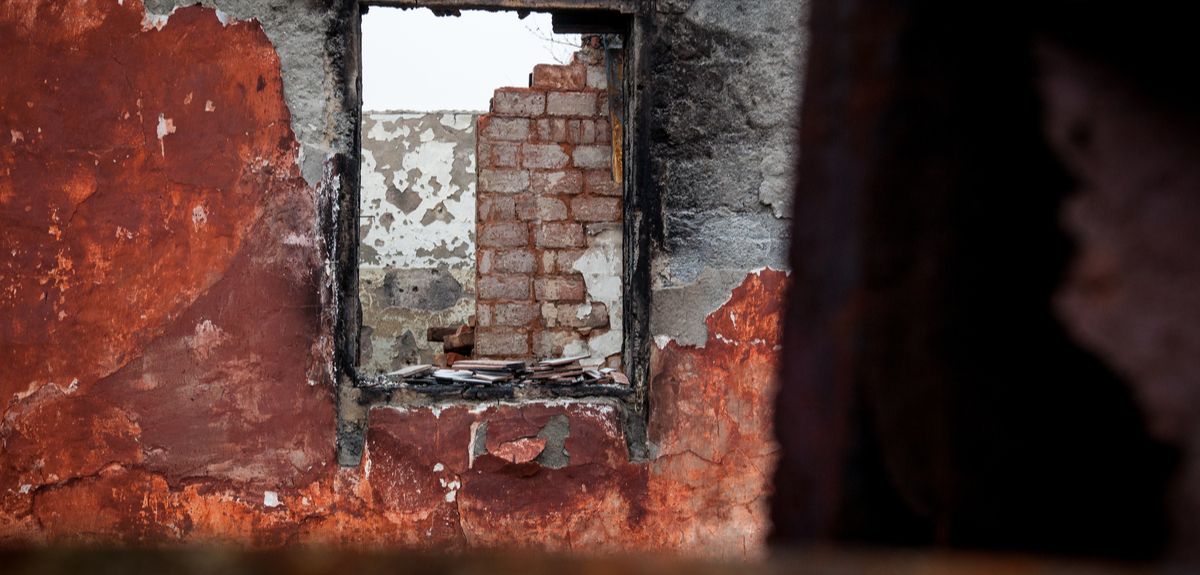
Expert Comment: Putin’s war - How did we get here? ....Ukraine 2014
It is eight years since one of the bloodiest days in what can now be seen as Ukraine’s first ‘Putin war’. As Ukraine reels from Putin’s War 2.0, it is worth remembering that, in November 2013, tens of thousands of protesters took to the streets in Kyiv, Ukraine’s thousand-year old capital city, to protest at the then President Viktor Yanukovych’s sudden decision to abandon plans to sign a free trade agreement with the European Union, blaming Russian pressure. As anti-government protests grew across the country, violence escalated, with security forces killing well over 100 protesters in Kyiv in February 2014.
By Dr Vlad Mykhnenko, Associate Professor of Sustainable Urban Development & Research Fellow, St. Peter’s College, University of Oxford
 Professor Vlad Mykhnenko
Professor Vlad MykhnenkoThe claim that the armed conflict in eastern Ukraine in 2014 was triggered by domestic and economically-determined factors did not hold water then, any more than the current Russian claims are legitimate now
Since the early occupation of the Crimea, the Kremlin has been protesting its innocence. And not much has changed over the last eight years. Back in 2014, President Putin went on television to deny Moscow’s military involvement in the war, claiming 'Ikh tam nyet [They aren’t there]'. A sarcastic social media meme (#ихтамнет) was generated, usually tagged to gruesome footage of blown-up Russian tanks and servicemen killed in action in Ukraine.
President Putin, meanwhile, maintained the actual Ukrainian army were fighting a civil war against 'former coal-miners and tractorists' from the Donbas. But the claim that the armed conflict in eastern Ukraine in 2014 was triggered by domestic and economically-determined factors did not hold water then, any more than the current Russian claims are legitimate now.
My research, published in 2020, reveals that economic and material circumstances in the region did not generate the necessary or sufficient conditions for a locally rooted, internally-driven armed conflict. The role of the Kremlin’s military intervention was paramount for the commencement of hostilities.
Since the early occupation of the Crimea, the Kremlin has been protesting its innocence. And not much has changed over the last eight years. Back in 2014, President Putin went on television to deny Moscow’s military involvement in the war, claiming 'Ikh tam nyet [They aren’t there]'
The Ukrainian Donbas is a typical shrinking old industrial region, suffering in the post-Soviet period from rapid deindustrialisation and persistent population loss. The Russo–Ukrainian war caused tremendous damage to the region in the period 2014–2018, with the total amount of permanent asset loss amounting to over US$84.6 billion in 2013 prices. Before the current war, the human cost of 15,000 lives lost and many millions permanently scarred by the earlier hostilities has been significant. The economic standing of Donbas as a whole, within the Ukrainian spatial economy, has more than halved, even considering the remaining economic activity in non-government-controlled territories.
During the first four years of conflict, the officially recorded aggregate regional GDP plunged by 61.1% in constant local prices and by US$20.1 billion, or 73.1%, in foreign exchange terms. In terms of industrial output, the weight of the occupied territories of Donetsk province shrank to just 20.5% of the aggregate provincial production in 2017.
Before the current war, the human cost of 15,000 lives lost and many millions permanently scarred by the earlier hostilities has been significant. The economic standing of Donbas as a whole, within the Ukrainian spatial economy, has more than halved, even considering the remaining economic activity in non-government-controlled territories
In Luhansk province, [Russian-backed] ORDLO militants control 29.8% of aggregate provincial production. After the first four years of war, workers in ORDLO were being paid about 60% of their counterparts’ earnings in the government-controlled areas, just over a third of the pre-war wage, a loss of 62–66% in purchasing power terms. As the economic situation in ORDLO continues to deteriorate, the population outflow from the region has inevitably increased.
The evidence shows clearly that ORDLO as a whole, let alone its two separate Donetsk and Luhansk sections, has an insufficient economic and demographic basis for anything resembling a financially and materially sustainable future as an independent statelet. The occupied Donbas is heavily dependent on Russia and formally governed by Moscow’s Inter-Ministerial Commission for the Affected Districts, which acts as a shadow civilian government.
The annual cost to Russia of sustaining ORDLO and maintaining and resupplying the armed formations operating there is in the region of US$5 billion. It is a costly, but entirely affordable affair in the medium term, given that the total stock of financial assets controlled by the Russian state amounts to R30.7 trillion (US$507 billion).
Nevertheless, Moscow’s prolonged involvement in other frozen conflicts across the post-Soviet space, including its extraordinarily deep patronage of Transnistria, Abkhazia and South Ossetia, does not bode well for a peaceful settlement in the Ukrainian Donbas. Indeed, President Putin’s Executive Order No. 183 of 24 April 2019, providing ORDLO residents with a fast-track procedure for obtaining Russian citizenship, has followed similar moves towards ‘passportisation’ in Russian protectorates, and is clearly aimed at deterring Ukraine from regaining its control over these territories in the future.The growing international pressure on Moscow, including further escalation of the Western economic sanctions’ regime against the Kremlin, its administrative apparatus and associated business interests, may provide an incentive to resolve the current Russian–Ukrainian stalemate as far as the occupied territories are concerned.
This has demonstrated that the ongoing armed conflict between Russia and Ukraine was not economically determined and cannot be explained in terms of economic rationality.
Despite the existence of some long-term baseline separatism, the Donbas was neither outstandingly prosperous nor excessively economically depressed—relative to the rest of Ukraine—to warrant an armed uprising of its own volition. Even before Putin’s War on Ukraine 2.0, the evidence presented here points to the paramount role of exogenous political agency (i.e., the Russian military intervention) and of endogenous military geography (dense urban environment in close proximity to the Russian border) in explaining the outbreak of the armed conflict in eastern Ukraine in April 2014.
The full paper, ‘Causes and Consequences of the War in Eastern Ukraine: An Economic Geography Perspective’, by Vlad Mykhnenko was published in Europe-Asia Studies, and is available online as an Open Access article at https://doi.org/10.1080/09668136.2019.1684447.
A Russian language version of the paper is also available as Влад Михненко (2020) Причины и последствия войны в Восточной Украине: экономическо-географический подход. Форум новейшей восточноевропейской истории и культуры / Forum für osteuropäische Ideen- und Zeitgeschichte, 17(1-2): 146-187.
Vlad Mykhnenko holds a doctorate in political economy from the University of Cambridge and is Associate Professor and Fellow of St Peter’s College, University of Oxford. Dr Mykhnenko specialises in geographical political economy and is the author of The Political Economy of Post-Communism: The Donbas and Upper Silesia in Transition (2011). He has written numerous articles on post-Soviet transformations and regional and urban economic development, currently serving on the editorial board of Eurasian Geography an Economics.
 New Year Honours 2026
New Year Honours 2026
 New study estimates NHS England spends 3% of its primary and secondary care budget on the health impacts of temperature
New study estimates NHS England spends 3% of its primary and secondary care budget on the health impacts of temperature
 International collaboration launches largest-ever therapeutics trial for patients hospitalised with dengue
International collaboration launches largest-ever therapeutics trial for patients hospitalised with dengue
 Oxford-built multi-agent assistant for cancer care to be piloted in collaboration with Microsoft
Oxford-built multi-agent assistant for cancer care to be piloted in collaboration with Microsoft